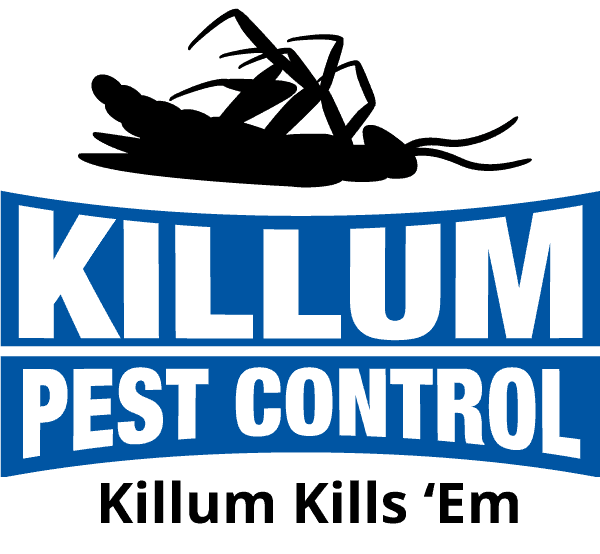Keeping pests out of schools is crucial to maintaining a healthy and safe environment for students and staff. In Texas, with its warm climate, schools often face challenges from various pests, including ants, roaches, rodents, and mosquitoes. These pests can cause health issues and disrupt learning, making effective pest management essential.
Texas schools provide the perfect setting for pests with plenty of food sources, water, and shelter. Cafeterias, lockers, and storage areas can attract unwanted guests if not properly maintained. Preventing pests requires understanding their habits and the areas most vulnerable to invasion.
Effective pest management in schools involves more than occasional spraying. It includes identifying potential entry points and implementing preventative measures to keep pests at bay. By being proactive and including regular inspections, schools can reduce the risk of pest infestations and ensure a clean and safe learning environment. The following sections will provide insights into common school pests in Texas and offer practical steps for keeping them out.
Understanding Common Pests in Texas Schools
Schools in Texas often find themselves battling a range of pests. Knowing the common culprits helps in managing them effectively. Here’s a quick look at the usual suspects:
1. Ants: Ants are frequently found in schools, attracted by food crumbs and spills. Once they find a food source, they can quickly form trails and become a nuisance.
2. Cockroaches: These pests thrive in warm, damp areas. School kitchens and bathrooms provide an ideal environment. Cockroaches can spread harmful bacteria and trigger allergies.
3. Rodents: Mice and rats are not just unsettling; they pose serious health risks and can cause structural damage. They enter schools seeking food and shelter and can contaminate surfaces with their droppings.
4. Mosquitoes: Schools with stagnant water nearby may face mosquito problems. These pests can disrupt outdoor activities and carry diseases like the West Nile virus.
5. Flies: These pests often buzz around cafeterias and garbage areas. They can spread germs and annoy students trying to focus on their studies.
Knowing these pests and their habits is important. It helps in adopting suitable methods to manage and prevent them effectively. Each pest comes with unique challenges, so recognizing them early can help reduce their impact on the school environment.
Identifying Vulnerable Areas and Entry Points
Pests enter schools through various entry points. Knowing where these are can help prevent infestations. Here are key areas to check:
1. Windows and Doors: Gaps around windows and doors provide easy access for pests. Ensuring they close properly and have intact screens can help prevent entry.
2. Cracks and Crevices: Small openings in walls, floors, and around plumbing fixtures are common entry points for pests. Sealing these with caulk or steel wool can block the way.
3. Ventilation Systems: Air vents, especially those without screens, can serve as highways for insects and rodents. Regular cleaning and covering vents with mesh can help keep pests out.
4. Food Storage Areas: Kitchens and cafeterias attract pests looking for food. Ensure that food is stored in tightly sealed containers and that spills are cleaned up immediately.
5. Drainage Systems: Moisture attracts pests like cockroaches. Inspecting and maintaining plumbing to prevent leaks can reduce pest attraction.
6. Outdoor Environment: Overgrown vegetation, standing water, and unkempt grounds can invite pests. Regular landscape maintenance and proper drainage can limit these entry points.
Understanding and addressing these vulnerable areas enhances the effectiveness of pest control measures. Regular inspection and maintenance are crucial in defending the school environment against pest invasions. Identifying and closing off these entry points helps create a less inviting space for unwanted visitors, ensuring a cleaner, healthier learning space for students and staff.
Proactive Measures for Pest Prevention
Keeping pests at bay requires a proactive approach with thoughtful measures. Here are some key strategies to ensure a pest-free school environment:
1. Regular Cleaning: Maintain a stringent cleaning regimen. Clean cafeterias daily, vacuum classrooms, and empty trash cans regularly to reduce food sources for pests.
2. Food Management: Enforce strict food policies. Ensure that food is sealed in airtight containers and that spills are wiped up promptly. Encourage students to clean up after snacks and meals.
3. Landscaping: Manage the outdoor environment. Trim bushes, keep grass short, and remove debris to reduce pest habitats. Ensure gutters and drains are clear to prevent standing water.
4. Seal Entry Points: Inspect and seal potential entry points regularly. Use weather stripping on doors and windows, and repair any cracks in the building’s exterior.
5. Educate and Involve Staff and Students: Raise awareness among students and staff about pest prevention. Encourage them to report sightings and practice proper waste disposal.
6. Integrated Pest Management (IPM): Employ IPM practices that focus on long-term prevention and minimal use of chemicals. It includes monitoring, mechanical controls, and environmentally friendly solutions.
By implementing these measures, schools can create a less welcoming environment for pests. Being proactive reduces the likelihood of serious infestations and maintains a safer, healthier place for learning.
Importance of Regular Pest Inspections
Routine pest inspections play a critical role in maintaining a pest-free school environment. Here’s why these inspections are indispensable:
Early Detection: Inspections help catch infestations early before they become unmanageable. Early detection allows for swift action, minimizing potential damage and health risks.
Cost-Effective Management: Identifying problems before they escalate saves money in long-term pest control costs. Treating small issues quickly is often much cheaper than dealing with large infestations.
Compliance with Health Standards: Regular inspections ensure that schools comply with health and safety standards. This is crucial to maintaining a safe environment for students and minimizing liability issues.
Peace of Mind: Knowing that your school is regularly inspected gives peace of mind to staff, students, and parents. It shows a commitment to their health and safety.
Professional Expertise: Professionals conduct thorough inspections that cover all aspects of pest control. They can spot signs that might go unnoticed by untrained eyes and recommend effective treatments and prevention strategies.
Regular pest inspections are not just a reactive measure; they are a proactive step in keeping your school environment safe and healthy. By integrating inspections into your maintenance plan, you can reduce pest problems significantly.
Conclusion
A pest-free school is essential for providing a healthy environment where students can focus on learning. Understanding the common pests that threaten Texas schools and recognizing vulnerable areas can be the first steps in keeping these nuisances out. Schools need to adopt proactive measures, like regular cleaning and sealing entry points, to prevent infestations before they start.
Routine inspections conducted by professionals are invaluable. They help identify potential issues early, saving time and money while ensuring the school’s compliance with health standards. Implementing a combination of prevention strategies and regular inspections can create a safe, comfortable learning space for students and staff.
For comprehensive pest control solutions tailored to your needs, reach out to Killum Pest Control, Inc. Our expert team provides services that keep schools across Texas pest-free. Contact us today to schedule an inspection and take the first step toward a cleaner, safer school environment.





